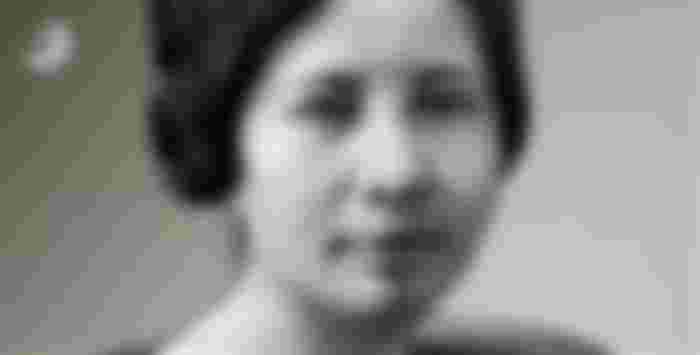02/17 What Happen Yesterday?

The Big Mudslide in Southern Leyte
February 17, 2006

Many Filipinos were shocked by a tragic tragedy in the province of Southern Leyte today, 15 years ago. At around 10:30 in the morning, a large, raging mud, ground and batp from the mountain slipped through the village of Guinsaugon in the town of St. Bernard. This happened during the more than 10 rainy days in the town. Smaller landslides have occurred in other barangays but Guinsaugon is the worst. Rising mud from the mountain buried most of Guinsaugon, and more than 1,120 people were buried alive in their own buried underground mud. Worst of all was the burial of a local elementary school in Guinsaugon, where 245 children and six teachers were buried alive and one child and an adult were brought back to life in a damaged school.
Deforestation and ruthless mountain mining have been blamed for landslides that have covered almost the entire Guinsaugon village. Because the trees in the mountains were down, which were supposed to be absorbed by the heavy rain, the ground softened and the perforated parts of the mountain gave way.
It will also be difficult to rescue the buried residents of Guinsaugon due to the incessant rains and some weak earthquakes. Aid was poured in on the victims of the Guinsaugon landslide, from the International Red Cross and material and financial donations from various countries such as the United States, Australia, Taiwan, Spain, South Korea and New Zealand, and they also sent their own. rescue teams each participating country.
If there is one lesson to be learned from this tragedy, it is that all of our lives are the substitute for the relentless abuse of some of us in our environment.
President Emilio Aguinaldo's wife Hilaria Del Rosario was born
February 17, 1877

On February 17, 1877, the son of Guillermo del Rosario and Cristina Reyes Hilaria del Rosario was born in the town of Imus, Cavite. Hilaria del Rosario is the first wife of the future general and first President of the Philippines Emilio Aguinaldo.
At the age of 19, Hilaria married Emilio in the New Year of 1896, a day after Aguinaldo, then municipal captain of the town of Kawit, Cavite, joined the Katipunan movement. Their marriage produced five offspring. Hilaria gave all her support to her husband, since Emilio led the revolution in Cavite in August 1896. He helped provide medicine and food for the revolutionaries and provided any support to their families. No matter where Emilio lands, his wife is always there.
When Aguinaldo was installed as the first President of the Republic of the Philippines in 1899, Hilaria was called the first "First Lady" of our country, although at that time such a title was not used in the wife of a sitting president. In the same year Hilaria founded the organization Hijas de la Revolucion (Women Sons of the Revolution) which became Asociacion de la Cruz Roja (Society of the Red Cross), the ancestor of the current Philippine Red Cross. It is an organization of women but also the wives of the revolutionary fighters are their sisters or nephews who provide medical care and raise funds for the supply of medicine and medical services of the Filipino refugees during the Filipino-American war.
Hilaria was also among those who fled to northern Luzon when the first Republic withdrew there in November 1899. In 1900 Aguinaldo convinced her to flee with some women away from the mountains, but the Americans captured Hilaria. The couple then reunited in April 1901, a month after the Americans arrested President Aguinaldo in Palanan, Isabela.
The Aguinaldo family lived privately in their home in Kawit, Cavite. At the age of 44 Hilaria del Rosario died of tuberculosis on March 6, 1921.
The Heroism of Edilberto Evangelista in the battle on the Zapote bridge
February 17, 1897

Edilberto Evangelista is not much mentioned in our national history, but the extent of its contribution to our history, from the time of the propagandists to the Filipino revolution against the Spaniards. And on this day in 1897, Evangelista became the martyr of a battle in Zapote in Cavite.
One of the biggest victories of the revolutionaries in Cavite after Binakayan, took place on an antique bridge between Las Pinas and Cavite. Led by Governor-General Camilo de Polavieja and General Jose de Lachambre, 12,000 cazadores and a few artillery pieces marched to Cavite to reclaim the revolutionary forces led by General Emilio Aguinaldo who had fallen into their hands.
Aguinaldo was holding only 10,000 revolutionaries waiting on the other side of the bridge, with only mental weapons, bamboo spears and some Mauser rifles against more armed opponents, but Aguinaldo planned a trap. Dynamics planted the Zapote bridge and laid sharp bamboos under the bridge. When they saw the cazadores approaching, Aguinaldo waited for more Spaniards to pass through the bridge, and then they blew up the bridge. Almost the entire bridge collapsed and the surprised opponents fell on sharp bamboos. A huge and moving encounter took place on the collapsed bridge.
Evangelista, one of those who helped lay the trap on the bridge, was shot in the head by a sniper, while another general, Tomas Mascardo, was seriously injured. Surprised and unable to prepare the Spaniards in Zapote, they were forced to withdraw from the battle. Aguinaldo captured several artillery pieces and more than 300 cazadores and 441 were killed, while 450 revolutionaries, including Evangelista, were killed. After Aguinaldo's brief weakness in Cavite, they were able to recover from the losing battles, but they still had to repel the Spaniards attacking Dasmarinas and Silang.
The clubbing of the Three Secular Priests of Gomburza
February 17, 1872

7:30 a.m. February 17, 1872. Filipino secular priests were released from their cell in Fort Santiago; Father Mariano Gomes, 73, Father Jacinto Zamora, 37 and Father Jose Burgos, 35. Accompanied by drums, the armed Spaniards marched on the secular priests while wearing their robes, along with a soldier named Francisco Zaldua, to the paseo de Bagumbayan. Three Filipino priests were found guilty of treason and sedition in connection with the failed uprising of Spanish soldiers at Fort San Felipe in Cavite on January 20, 1872. Although Padre Burgos vehemently denied the accusation, they were still punished. die by garot, and Governor-General Rafael de Izquierdo confirmed the death penalty on convicted priests.
When they arrived in Bagumbayan, a scaffold was waiting for them where the garote vil was, a hanger where a convict was killed with a sharp screw that would break the spine around the neck. Many people, whether foreign or Filipino, were there to witness a disgusting show while the soldiers guarded them. At the bottom of the scaffold, three Filipino priests were again punished. Zaldua, who was confident of being pardoned for his involvement in the failed mutiny for testifying against Gomburza, was also the first to be promoted to his death.
After that, the old priest was taken upstairs, saying "I will go to the place where the leaves do not fall without the compass of God". Padre Zamora, on the other hand, was the next one, who was just stunned and unable to speak, probably lost his sanity. When Padre Burgos was taken to the garage, it was said that he was like a child struggling and weeping, and insisted that he was not guilty of the crime of infidelity. But a friar there calmed him down, saying that even Jesus was killed even though he was innocent.
It is said that many people worked together just to push Padre Burgos to the garage. One of those who witnessed those events was Jose Rizal's older brother Paciano, who was then 20 years old, a student and close friend of Padre Burgos. He was forced to return to Calamba from Manila to avoid persecution of people related to the convicted priest. Silence enveloped around Bagumbayan after Padre Burgos died. At the same time that Filipino secular priests were being harassed, Archbishop of Manila Gregorio Meliton Martinez rang church bells across the country, commemorating their martyrdom. Archbishop Martinez, who believed the priests were innocent of their crime, begged Governor Izquierdo not to undress them.
Since then, Filipinos have not been able to pronounce the year 1872, or even the names of Gomes, Zamora and Burgos. They were buried in an unmarked grave in Paco cemetery in Pandacan, Manila. But with their death, a new spirit emerges, nationalism, which will be the weapon of our heroes to fight for our independence from the colonial regime. Gomburza's martyrdom inspired Jose Rizal in his second novel "El Filibusterismo" dedicated to the three martyred priests.
In honor of their heroism, a small obelisk was erected on the site where the scaffold was slaughtered in Gomburza, just near Rizal's monument in Luneta. In 1998, Manila City Engineering Office staff discovered the grave where Padre Gomes, Burgos and Zamora allegedly lay.
In this day and age when our human rights and our views, whether political or religious, are being violated by those in power, let us be an example of the great life of the three Filipino priests Padre Mariano Gomes, Jose Burgos and Jacinto Zamora , who fearlessly stood up for what they thought was right and proper not only for themselves but for the sake of their fellow Filipinos. A tribute to the 149th anniversary of the heroism of Gomburza from the composers of the Socsciclopedia.
Jose Rizal, then 10 when Padre Gomez, Burgos and Zamora were robbed, dedicated his novel El Filibusterismo to their memory in 1891.
Copyright © 2021 MidnightWriter. All Rights Reserved



